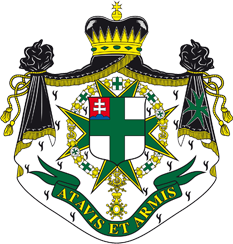Kostol svätého Lazara malomocných v Ríme.
LA CHIESA DI SAN LAZZARO DEI LEBBROSI A ROMA
(Chiesa di San Lazzaro al borgo o dei lebbrosi, sec. XII)
La chiesa di San Lazzaro, anche conosciuta come San Lazzaro dei lebbrosi o San Lazzaro in Borgo, è un luogo di culto cattolico di Roma situato nel quartiere della Vittoria, in via Borgo San Lazzaro.
La chiesa sorge in una strada laterale della via Trionfale, che rappresentava la parte finale della via Francigena, seguita dai pellegrini di tutta Europa per giungere a Roma e pregare sulle tombe degli apostoli. Conosciuta oggi col nome di San Lazzaro in Borgo o San Lazzaro dei lebbrosi, risale alla fine del XII secolo, quando un pellegrino francese, per ringraziare Dio della guarigione dalla lebbra, raccolse offerte e fondò una chiesa, dedicata a santa Maria Maddalena (su un preesistente oratorio o edicola sacra risalente al X secolo); accanto alla chiesa esisteva una locanda, ove i pellegrini si ristoravano per l’ultima volta prima di giungere in città.
Una “ecclesiam sancte Marie Magdalene ad pedem Montis Mali” (oggi Monte Mario) è attestata in un documento dell’11 maggio 1278, mentre atti notarili del 1480 attestano la fondazione di un lazzaretto adiacente alla chiesa: è in questa occasione che la chiesa mutò il suo nome in quello attuale.
Gravemente danneggiata dai Lanzichenecchi nel 1527, fu restaurata nel 1536 ed eretta a parrocchia. Lo rimase fino al 1828; in seguito la chiesa cadde in rovina; e ciò che rimaneva del lazzaretto (un portale, alcune colonne e qualche muro) crollò definitivamente nel 1937. Solo nella seconda metà del XX secolo sono iniziate opere di recupero dell’edificio sacro, che sono culminate con i restauri effettuati dal 1997 al 2004, che hanno portato al rifacimento del tetto e della pavimentazione interna. La chiesa fu riaperta al pubblico ed al culto nel 1981.
La chiesa è ricordata nelle antiche cronache per diversi motivi: i papi che venivano eletti fuori Roma, iniziavano il loro corteo di presa di possesso della città a partire da questa chiesa; gli imperatori che scendevano a Roma per farsi incoronare dal papa, sostavano in questa chiesa in attesa di ricevere i messi pontifici che li accompagnavano in San Pietro; l’ubicazione della chiesa rappresentava infine una specie di “cordone sanitario” per la quarantena quando scoppiavano gravi epidemie.
Delle strutture medievali rimangono la chiesa e l’antica locanda, mentre sul luogo dell’antico lazzaretto di Roma è stato edificato, negli anni settanta del XX secolo, un posteggio.
THE CHURCH OF SAINT LAZARUS OF THE LEPERS IN ROME
(Church of Saint Lazarus of lepers, sec. XII)
The Church of Saint Lazarus, also known as Saint Lazarus of the lepers or Saint Lazarus in Borgo, is a Catholic place of worship in Rome located in the Vittoria district, in via Borgo San Lazzaro.
The church stands on a side street of the Via Trionfale, which was the final part of the Via Francigena, followed by pilgrims from all over Europe to reach Rome and pray at the tombs of the apostles. Known today as Saint Lazarus in Borgo or Saint Lazarus of the lepers, it dates back to the end of the 12th century, when a French pilgrim, in order to thank God for the cure of his leprosy, collected donations and founded a church, dedicated to Saint Mary Magdalene (on a pre-existing oratory or shrine dating back to the 10th century); next to the church there was an inn, where pilgrims refresh themselves for the last time before reaching the city.
An „ecclesiam sancte Marie Magdalene ad pedem Montis Mali“ (today known as Monte Mario) is attested in a document dated 11 May 1278, while notarial acts of 1480 attest to the foundation of a lazaretto next to the church: it is on this occasion that the church changed its name to the present one.
Badly damaged by the Landsknechts in 1527, it was restored in 1536 and made a parish church. It remained a parish until 1828, after which the church fell into disrepair, and what remained of the lazaret (a portal, some columns and a few walls) finally collapsed in 1937. It was only in the second half of the 20th century that work began to restore the sacred building, culminating in the restorations carried out from 1997 to 2004, which led to the reconstruction of the roof and interior flooring. The church was reopened to the public and to worship in 1981.
The church is remembered in ancient chronicles for several reasons: popes who were elected outside Rome would start their procession to take possession of the city from this church; emperors who came down to Rome to be crowned by the pope would stop in this church while waiting to receive the papal messengers who would accompany them to St Peter’s; finally, the location of the church represented a sort of ‚cordon sanitaire‘ for quarantine when serious epidemics broke out.
The church and the old inn remain from the Middle Ages, while a car park was built in the 1970s on the site of the old Roman lazaret.
UDALOSTI
- CHRISTMAS MESSAGE 2024 TO THE MEMBERS OF THE ORDER OF SAINT LAZARUS FROM HIS GRACE ARCHBISHOP IAN ERNEST, ECLJ, REPRESENTATIVE OF THE ARCHBISHOP OF CANTERBURY TO THE HOLY SEE 26. decembra 2024
- CHRISTMAS MESSAGE 2024 OF THE METROPOLITAN FOR CENTRAL AND WESTERN EUROPE, BULGARIAN ORTHODOX CHURCH 25. decembra 2024
- CHRISTMAS MESSAGE 2024 FROM THE GRAND ECCLESIASTICAL PRIOR OF THE ORDER OF SAINT LAZARUS OF JERUSALEM 24. decembra 2024
- A Christmas letter from the Grand Master 23. decembra 2024
- Deň Sv. Lazára 17. decembra 2024

 Military and Hospitaller Order of St.Lazarus of Jerusalem Grand Priory Slovakia,
Military and Hospitaller Order of St.Lazarus of Jerusalem Grand Priory Slovakia,
